LG HG2 Review (20A, 3000mAh) August 17 2015, 60 Comments
This is LG's new brown battery - the LG HG2
Overview
A post on the HG2 is long overdue.
While the original release of the LG HG2 was in 2014, production has become available in Summer 2015. A 20 amp, 3000 mAh milestone is, in some way a holy grail of stats. A battery that can both be high-drain, and high-capacity is just what everyone wants. The LG HG2 can be seen as a 500mAh capacity upgrade from its predecessors the HE2/HE4 which also have a 20A discharge limit.
LG Chem is on a rolling schedule of releases and research, all planned years in advance. An average of between 6% and 10% increase in battery performance is expected, compounding yearly. That means, taking into account the battery specs and LG Chem's release schedule, the LG HG2 will likely be a good contender for one of the best 18650 batteries for some months to come for high-drain applications.
That said, there are many cases where the newest 18650 battery with the latest specs never gains mass adoption. That can be due to a number of reasons including a quick upgraded release, unforeseen safety problems, supply chain insecurity, market ignorance, and so forth. It's for that reason I am not crowning the HG2 as the new king on specs alone.
To test that claim, I'll do the standard Battery Bro review:
- Take a look at the HG2 specification sheet
- Visually inspect the battery
- Do three discharge tests
- Unwrap the battery
- Determine whether the HG2 deserves a noble title
HG2 Spec Sheet

My comments on the HG2 specification sheet:
2.1 Capacity
3,000 milliamp hours is the highest capacity ever for a true high-drain (20A+) cell. If you are interested in maximizing both amperage and capacity you should consider this cell because it doesn't get better at the moment.
2.2 Nominal Voltage
This is the standard voltage for all 18650 batteries. (3.7V 18650 batteries are older, a standard of measurement was changed but actual voltage remains the same.)
2.3.1 Standard Charge
A 1.5A standard charge is good.
2.3.2 Fast Charge
A 4A fast charge is also good. However keep in mind that fast charging will decrease the cycle life of the HG2.
2.4 Max. Charge Voltage
Standard, no comment
2.5 Max. Change Current
N/A
2.6.1 Standard Discharge
These are normal standard discharge values. The nominal capacity of the HG2 is determined while discharging at these values. When discharging at its max. continuous discharge rating the capacity will be slightly reduced (watt hours more so).
This has likely led to the claims that the HG2 under performs. However many of these tests neither distinguished between the standard discharge vs. max. discharge testing conditions, nor did they take into account fast discharging conditions outlined by LG Chem in the spec sheet (see next section).
2.6.2 Fast Discharge
The Fast discharge has been tested at both 10A and 20A. What is important to note is the cut-off voltage of 2.0V. LG Chem’s testing conditions for rating Fast and Max. discharge values are as follows:
Cells shall be charged at constant current of 4000mA to 4.2V with end current of 100mA. Cells shall be discharged at constant current of 10000mA and 20000mA to 2.0V. Cells are to rest 10 minutes after charge and 30 minutes after discharge.
2.0V is considered the lowest possible safe cut-off voltage for discharging any 18650 cell. Most 18650 cells cut-off at 2.5V. This 0.5V difference translates to a higher milliamp hour rating, but at expense of utility. (We see a similar parallel between the LG HE2 and HE4 fast discharge conditions).
Most people do not want to go below 2.5V for safety concerns, and if they do the low voltage environment does not provide ideal performance.
2.7 Max. Discharge Current
A 20 amp cell - very good.
Note that this is the cell's maximum continuous discharge rating. Some people seek pulse ratings, which are often fabricated.
Remember: a pulse is defined as current over time. Without stating time, pulse lacks meaning. An example of a proper pulse rating would be 30 amps for 2 seconds. A cell rated at anything above 30A, without an attached unit of time is, in essence meaningless. None of the big three (Panasonic, LG, Samsung) make an 18650 battery rated at over 30A.
2.7 Weight
(Maximum weight)
2.9 Operating Temperature
Standard, no comment
2.10 Storage Temperature
Standard, no comment
- Never charge below freezing (important for the solar readers: always keep your batteries in a temperature controlled environment.)
Visual Inspection & Basic Measurements

Here is the top-cap, or positive terminal of the HG2. Note there are four top-cap connection points on LG 18650 batteries.
There should be no rust, discoloration, spots, burn-marks, excessive scratch marks, or anything else out of the ordinary. As this cell has been recently produced (Summer 2015 batch), they are new and the steel will reflect that. If your new HG2 has any of the abnormalities listed above, request a return with your vendor and suspect a counterfeit battery.

This is the negative terminal, or bottom of the LG HG2. Nothing abnormal here. There are a few scratch marks (usually circular) on the bottom even on brand new cells. This is normal and from production, as the cells are tested and charged and the steel scratches easily.
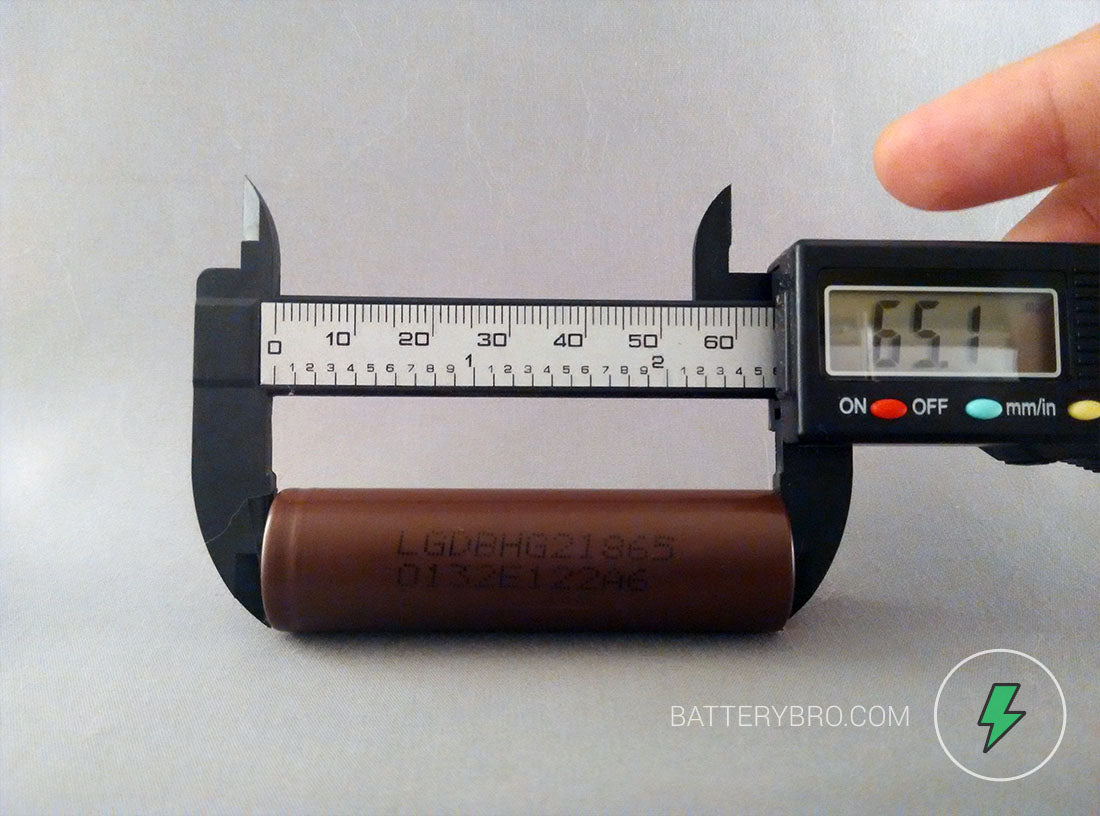
Height: 65.1mm - check. (Do not do this with metal calipers as you may short-circuit the cell.)

Width: 18.5mm - no problems here. If you are making a pack, note they are a little bigger than 18mm.

Weight: 44.86g. Let's call it 45g from measurement error. Where does that leave us? With a max. specified weight of 48g - it leaves us just fine. Albeit I will weigh a few more later just to confirm, a 3 gram discrepancy from maximum value does not cause alarm.
Discharging the LG HG2

Accounting for the test's environmental temperature. This is five points off an ideal temperature (LG Chem's test opted for 25 degrees C), but at this difference the efficiency loss is negligible and I will go ahead.

I enjoy charging my 18650 batteries on the VC2. The big display just makes my life better.

This is our 18650 discharging unit. The readout is volts (that last digit is a V and not a U if you were wondering). As you can see this battery is running out of juice, and the discharge test is almost complete. This unit runs off of USB power and as such it has an unfortunate current limit of 3A.

For the first discharge test I used a 2.50 amp current with a cut-off voltage of 2.50V. The capacity is 40mAh hours short of the rated capacity of 3000mAh. Does this mean the battery is not meeting its rated stats?
Yes and no.
Here's what I mean.
The Yes
For one, the cell in this test is a few months old. A lithium-ion battery will lose some capacity every month it sits in storage. When we are concerned about 40mAh, some of that is attributed to its age.
I could also tweak my testing environment to fit LG's testing conditions by:
- bring down cut-off voltage
- change the environmental temperature
- change amp discharge rate
- reduce the charging rate
- match end current
The No
Having said that, calling this a true 3000mAh battery is stretching the truth. It is more accurately stated as a 2960mAh battery.

Discharge test two confirms the HG2 capacity at ~2960mAh.
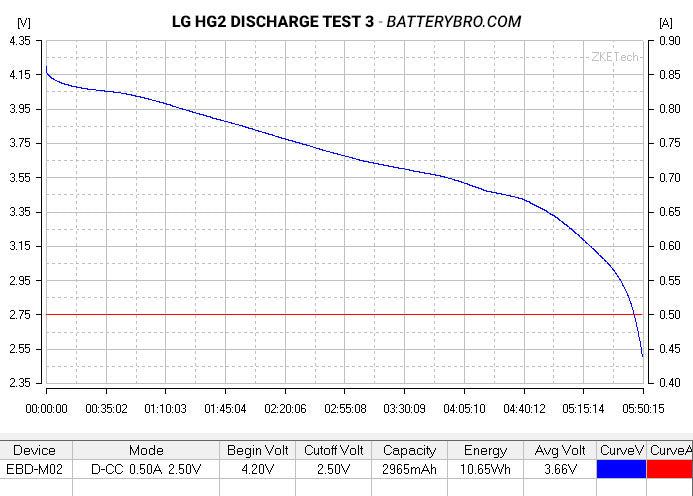
For discharge test three I changed the current to 0.50A. As you can see, at lower amperage discharges, the capacity goes up. (In this case, about 6 mAh were gained).

In this image I overlapped the 2nd (2.5A) and 3rd (0.50A) discharge test so you can see what is really going on.
If you look at the bottom-right of the chart, the difference along the X-axis (mAh) is small.
However the Y-axis of Voltage shows a bigger difference. You can think of this as the batteries lasting about the same amount of time, but the low amperage one gaining more working power. A higher voltage for longer results in more watt hours. The watt-hour rating can be argued as just as important as the capacity (mAh) rating.
Unwrapping the PVC

There are three markings to be found on this particular LG HG2 battery.
- b
- A
- 1
These are quality control markings and likely batch identification codes. If you unwrap your HG2 and notice it has very different markings please leave a comment describing them.

Here is another look at the top-cap in all its glory, this time without the heat-shrink PVC or washer.
Conclusion
In the beginning I claimed the HG2 may be the best high-drain battery available right now. Unfortunately the cell I tested does not quite meet its mark at 3000mAh. It however does clock in at 2960mAh.
Even if we call it a 2900mAh, or a 2800mAh battery - it still surpasses the Samsung 25R (2500mAh) and the LG HE2 (2500mAh).
There are cases which this can be shown wrong, in particular in high-drain tests at 20A which I did not perform. It is however, highly unlikely that the capacity will be effected enough so that it can not exceed 2500mAh.
It is for that reason I am fairly comfortable claiming the HG2 is quite a beast, and I crown it as the current king of high-drain.

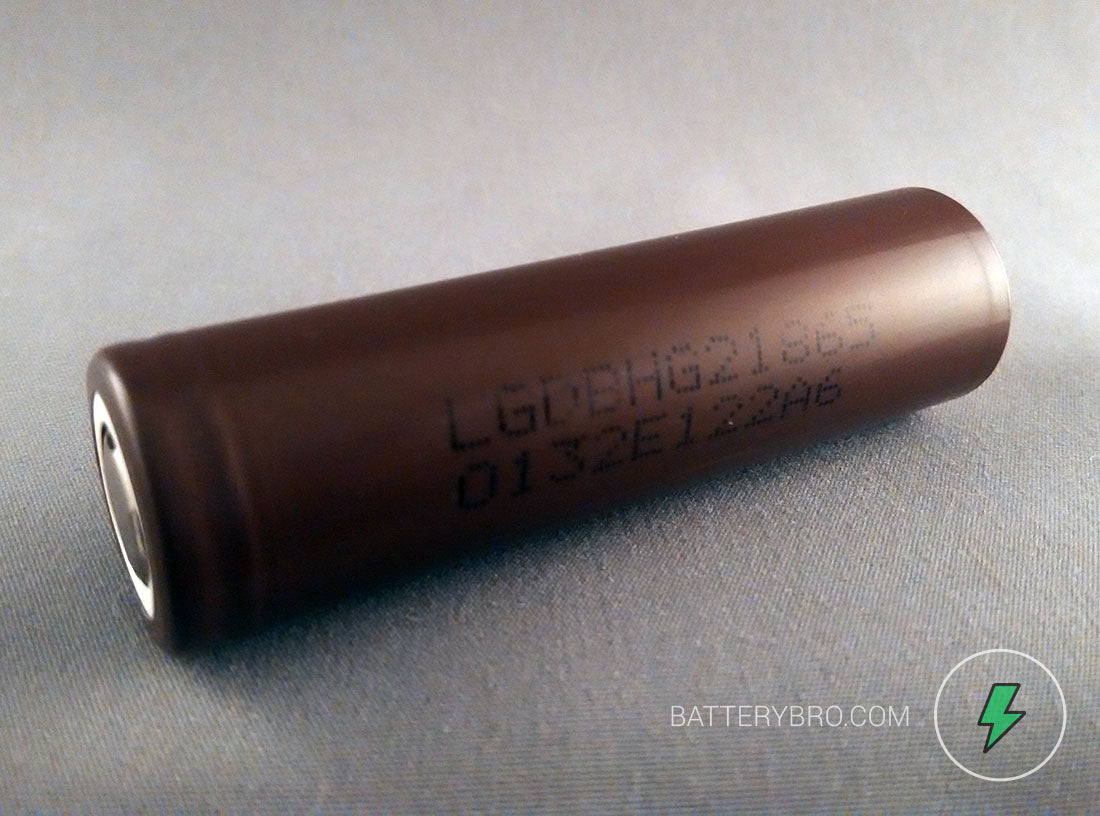
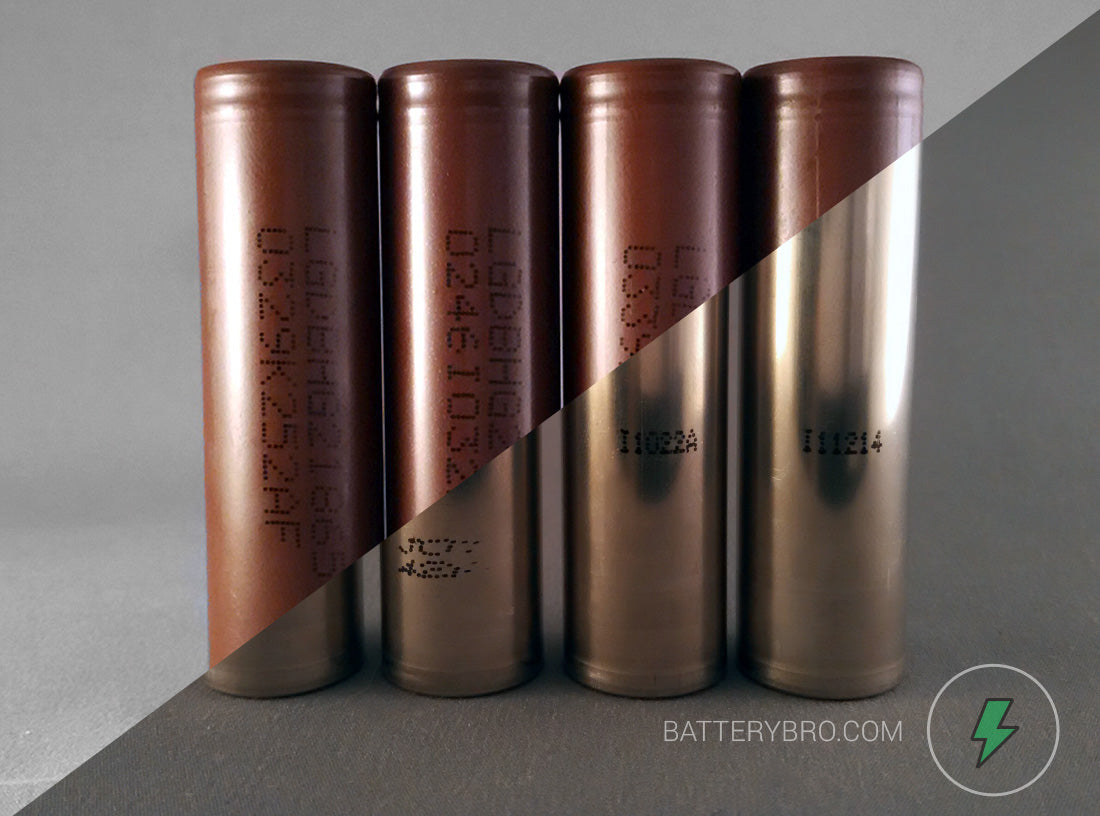
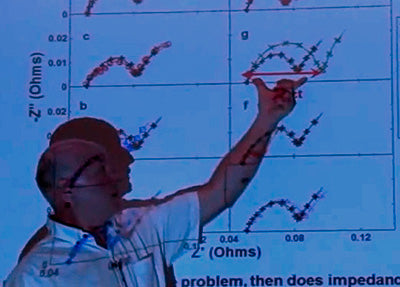
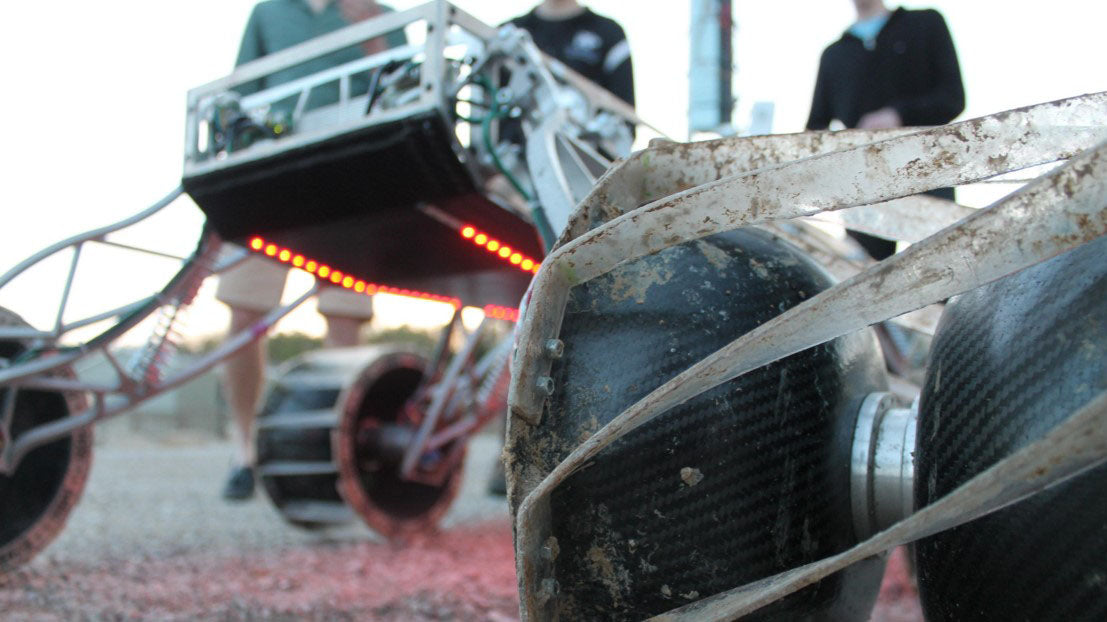



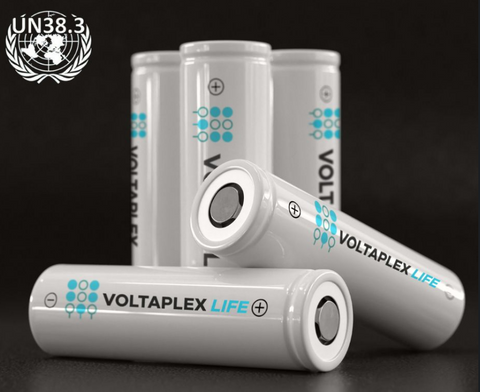

Comments
Praveen on June 01 2019 at 05:43AM
If I need to purchase these batteries…(36 no)…. where can I place the order….nd how much would it cost me… I’m looking to get it delivered in UAE, DUBAI…
cat1092 on December 23 2018 at 12:04PM
This has been a fantastic battery for the last 3 or so years, one thing to mention if considering purchase in late 2018. Be sure to buy from reputable vendors only, such as ILLUMN.COM or RTD Vapor, while there are others, these tops many lists & both stands behind their products sold.
If on a promo & you’re planning on storage, please keep where not too hot nor cold, but not sealed. My extras are stored in a backpack in the closet, as far away from both elements as possible. This area, but not in the backpack, is where I also store my mixing supplies.
The LG HG2 18650 is a great batter if used properly. Example, when running a dual battery mod at no lower than 0.50ohms, these will last most of the day when vaping at 35-40W. If a 3 battery mod, where most normally doesn’t use these, then the ohms can go down a bit & wattage up some, just not a lot in either direction. Most who runs tri or quad battery mods tends to go with a Sony VTC5A (if 18650, sometimes using an adapter), or move up to the 20700 or larger cells. My recommendation is to move up, unless one has a lot of unused VTC5A’s stocked, the LG HG2 is NOT for 100W+ vaping.
However, it does perform quite well for those who still runs the (even older than the HG2) Kangertech Subtank Mini, one can vape all day long, even with the 0.5ohm coil provided, or use the RBA. I love these cells so good, had to purchase two more sets from RTD Vapor during their 2018 Black Friday sale.
While I’ve yet to try out the two sets of Sony VTC6 purchased, which are also the same 18650 size & packs 3000mAh, yet not quite a 20 amp continuous cell, due to being newer, may last longer if not pushed too hard. The Samsung 30Q, otten called ‘Samsung Pinks’ (don’t go to a vape store & request by that term), competes with the Sony VTC6. Yet neither are a direct competitor to the LG HG2 due to being marketed (& tested by many) as 15A cells. If both were 20A, as the HG2, we’d have a new 3 way shootout. A few has already declared the Samsung 30Q to be the 18650 ‘King", yet as long as there’s a supply of new, genuine LG HG2’s around, that’s far from the truth. The only variable may be if there were some new HG2’s sold that has been in storage 2-3 years, yet I see that as the cell has lost some lifetime cycles, it should still have it’s 20A rating,
Therefore, if you can benefit today from the LG HG2 & purchase from a trusted vendor, go for it, mine has lasted for over two years & I have two more sets waiting for action, in addition to as many of the VTC6 (purchased by mistake) & VTC5A cells. Please don’t make the mistake of assumption, like I did with the VTC6, thinking because it had a higher number, had superseded the VTC5 series. For light to moderate vaping, maybe so, but doesn’t pack the 20-25A of the VTC5/VCT5A lineup needed for high powered vaping.
The LG HG2 is still a contender in today’s market & considering all of the changes since then, it’s remarkable we’re still discussing the cell this long post release. Take care of these cells & they’ll last a long time for the non-cloud chasing crowd. Use a quality charger, one that’ll do 0.5A charge is great.
Jonathan Arnold on February 05 2018 at 10:55PM
I see on my battery e cigarette use prohibited is this normal and can I use this for gaping or do I got the wrong/fake battery?
skinnie on January 29 2018 at 07:06AM
I am thinking in rebuilding some laptop batteries (one from my Lenovo X230 and another 2 from a Powerbook G4. I’ve read this would be the best cells to use, do you agree?
Alejandro on May 22 2017 at 10:05AM
Dear Sir;
I really appreciate what you do for all us.
As many I am an amateur using this stuff but I am getting nervous due to LG HG2 explotion that sadly happened to Andrew Hall .
https://thenextweb.com/gadgets/2017/01/18/e-cigarette-blows-up-man-face/
I would like to know if the true cause of this awful accident is known or what could be the possible causes of it.
Thank you so much. !!
ergun k on March 29 2017 at 02:54AM
can i use this batterie wireless mouse a4 tech
Jaadu on March 01 2017 at 11:27AM
Can we discharge the battery at 25 amps for 30 secs?
Mark on February 19 2017 at 11:21PM
Hi . Do I charge this 18560 battery on 3.6v or 4.2v on my charger. It has a switch.
Gregc on February 10 2017 at 05:01PM
@Wayne – I recently bought a few of these cells and, in addition to the typical 2 lines of black dot-matrix LG model, date, and batch codes, there is a label stamped on the wrapper using some kind of thick white paint. It produces slightly raised lettering which reads:
! CAUTION
- Use for battery pack maker(s)/system integrator(s) only.
- On-line e-commerce sales, sales to individual consumers,
or sales for E-cigarette use are strictly prohibited.
Yeah, right….
The “! CAUTION” is in a hollow font that is about 3 to 4 times the height of the rest of the lettering, and the “!” is inside a triangle.
Daniel B on December 22 2016 at 08:58AM
I bought 3 of these batteries for my wisemec mod. Charged theme overnight on the 1amp setting in my Efest charger.
Will this give the cells a proper charge?
When I put them in my mod it only read 99%
Alex on December 13 2016 at 05:22PM
Very thorough review, thank you!
Newbie question: I intend on using 2 of these in a vaping box-mod (Joyetech Cuboid 200w). Can I/Should I recharge the batteries using the provided USB-charger for the device? Does it matter if I charge from my PC or from a wall adapter or from my car? Or should I purchase a separate charger? What are pro/cons to any of the methods?
Thank you in advance.
Christophe on November 29 2016 at 10:15AM
Someone has an idea of the cycle number reachable with this model? 400-500 cycles? after 80% BoL?
Many thanks!
Wayne on November 27 2016 at 03:07AM
I have heard in the 3 quarter of 2016 LG is limiting the sale of these batteries and will not offer them to consumers. They have also added a new caution label to the wrap. Is that true?
VapeMonkey on October 01 2016 at 06:41PM
I charge 3 batteries like these on my nitecore i4 v2. they show a full charge on the nitecore, but when I put them in my RX200s, one shows 4.25V and the other 2 show 4.16. is this normal?
Karbusoak on September 07 2016 at 04:59AM
Hi… i use this battery for my vapor mod..but i have a decent charger for this battery.. my charger only has 3.7/ 500mA output and 4.2v end of charge voltage.. is this charger good for this battery? Thanks..
Mr Mark Bartlett on July 27 2016 at 06:59AM
@Alex.
I have 3 of these batteries in a box-mod like yourself. In my experience, the batteries will likely be in series, but with regulated box-mods, the voltage regulator be reducing the voltage to a greater or lesser degree depending on the power setting you have. The current will make up the rest to make the power (w) as long as the batteries have enough current to deliver.
Mr Mark Bartlett on July 27 2016 at 06:51AM
@Anton
Sorry, my last comment should have read…. “@Anton”, not “@Anon”. Silly me.
Thanks again ;)
Mark
Mr Mark Bartlett on July 27 2016 at 06:49AM
@Anon
Thanks for the advice on charge current at end-of-charge. The charger I’m using is a Ripmax Pro-Peak Sigma that DOES taper the current as the charge progresses.
The only thing that is concerning me is the charge current at the start of the charge, which ramps up to full current (I have set the charge current to 1A) at the very start of the charge.
Am i right in saying that this battery chemistry would do better with a small trickle current for a short period at the start and only full current in the middle of the charge? My charger starts high anmd tapers off as the charge progresses.
Really appreciate your thoughts on this.
Mark
leroy on July 26 2016 at 09:58AM
which has more cycles, LG Chem 18650 HG2 or the Samsung INR18650-25R5 (over 250 cycles)? i see that LG is $7.31 while the Samsung is about 30% cheaper albeit the LG has 500 more mah.
Anton on July 22 2016 at 01:14AM
@Saimon – Unfortunately, this is not enough information to determine whether it is a fake cell. However, any markings on the naked steel are a positive sign and can be used as weak corroborative evidence.
@dekel – This is the capacity or voltage grade of the cells. When LG produces a batch, there are slight (very small) discrepancies in performance. This can be an issue when building large battery packs where any variation will cause stress to individual cells. This particular grading can result in a maximum of about a 30mAh difference (less than one volt).
@Chris Beneke – That’s interesting to note. I would be interested to know if there are any other environmental differences not taken into consideration.
@JO – Hello Jo, with these codes we can determine the location, assembly line, batch number, and potentially other details. Currently, we only support date look-up which you can check out here: https://batterybro.com/pages/18650-date-code-lookup-tool
@Khalid Jiwa – From appearance alone, the cells are not suspect. The generic white sticker and box they come in are normal, as these are low-cost packaging options that many distributors will use. The matte ring and ridges are a positive sign. At this point, I would suggest performance testing them with a charger that has a capacity read-out.
@Bill – I’m sorry but I am not 100% sure how normal this is. Your codes do not look suspicious to me and I was able to look up data correctly with them.
@Bob – The LG HG2 is an 18650 lithium ion (li-ion) cell. LiFePO4 is also lithium ion (li-ion) by nature as it shunts lithium ions between the positive and negative terminal. LiFePO4 describes a chemical composition, which the HG2 is not. The HG2 is a 3.6V battery, while all LiFePO4 cells are 3.2V.
@Alex – It will depend on your box mod. If they are in a series, the voltage will increase. In parallel, capacity will increase.
@Mark Bartlett – A 1A charge current to a cut-off voltage of 4.18V will work. However, 18650 batteries should taper the current at the end. All 18650 cells are now rated at 3.6V (the rating at 3.7V was used for older cells, but both are essentially the same. The only thing that changed was the regulation that determined the method to do the voltage average.) To be safe, I would contact the manufacturer of your charger and ask them which setting is safe for lithium-ion 18650 cells.
Mark Bartlett on July 20 2016 at 06:15AM
Hi, I’m wondering if you can help. Will i be ok to charge these cells individually on a RC Lipo charger. The charging current i have set around 1000mAh and charge voltage of 4.18v as I type. Will that be ok for these batteries?
The charger has settings for both Lipo and Lithium ion, but the Lithium Ion setting is fixed to 3.6v and wont fully charge. I have to set it to Lipo which is fixed at 3.7v for it to fully charge.
Would really appreciate your help.
Mark
Alex on July 04 2016 at 04:18AM
I’m using a box mod that requires 3 lg h2 18650 batteries to run. Are these in parallel? And so does that mean I have 3x as much max amps to work with on the discharge but the same voltage?
Bob on June 11 2016 at 07:38AM
Can any on tell me if the LG HG2 3000mAh is a Li-ion or a LiFePO4, many thanks.
Bill on May 18 2016 at 02:11PM
I bought 4 of these on amazon, when I received them they had a sticker over the numbers except for where it says 1865. I pulled off the stickers and the numbers for each battery are identical. Is that normal?
Top: LGDBHG21865
Lower: 0322K181A1
Khalid Jiwa on April 29 2016 at 05:13PM
Hey guys, just wanted to get some input on my HG2s. I got them and they seen to be performing well but I want the peace of mind knowing they are authentic. I noticed a few things. They come in a generic box, they all have a generic white sticker which I haven’t seen before in the battery. They have no serial numbers. They do have the matte white ring and the proper ridges from what I can see. Any help would be appreciated
http://i64.tinypic.com/dy3vnl.jpg
http://i67.tinypic.com/hurnmh.jpg
http://i67.tinypic.com/2hq77ma.jpg
http://i63.tinypic.com/2hgg5rl.jpg
JO on April 22 2016 at 12:28PM
I here there are fake 18650 lg hg2 brown batteries. I unwrapped mine and the number on it is A25123. what can you tell me about this?
Chris Beneke on April 21 2016 at 06:08PM
I’m seeing the same thing as Nick Jennings. All other things being equal, my newer HG2s do not last as long as my older 25Rs. I’m using an IPV D2 at 65w with a .3 ohm coil. The HG2s seem to lose their kick mid-day while the 25Rs will last me a full day of work.
dekel on April 21 2016 at 04:09PM
hey,
i just order some GH2’s from you guys,
but during my reserch, i was asking an aliexpres vendor, if the cells are:
authentic, brand new, LG HG2 battery.
he replay to me with a “yes”, they are original LG cells, and he alsow added a pic:
http://kfdown.a.aliimg.com/kf/HTB1DS0sMFXXXXcvXVXXq6xXFXXXP.jpg
in this pic we can see its say “GRADE B-2”
i just wondering if that mean they are grade B cells.
Saimon on April 08 2016 at 07:39AM
hi, after unwrapping i can see only I11411 sign on naked battery , is it fake?
Anton on March 28 2016 at 05:54AM
I would also like to mention, we recently tested some “HG2” cells with a darker color and they almost certainly were rewrapped HE2s. If you have a way to test capacity either with charge or discharge you should be able to confirm this.
Anton on March 28 2016 at 05:52AM
That is interesting indeed.
Not all Grade A batteries are stamped. For example, many HG2 batteries you see today (March 2016) were meant for a client in Japan but ended up on the open market in Hong Kong, China, and ultimately sold worldwide in small lots. This kind of thing happens often, and in this case, a large # of batteries didn’t get stamped.
You might have one of these cells, or maybe not.
Because it’s also true, that many fake batteries are not stamped. This happens when counterfeiters (Chinese and Malaysian factories) buy only the steel tube and “pack, cap, and wrap” it without ever printing any ID or QC type codes on the steel.
So we can not only use labels to detect fake HG2 batteries. I would be more interested in hearing about your grooves. If you send us a photograph we will take a closer look for you.
craig on March 27 2016 at 10:06AM
Battery bro your definetly the ultimate battery gu-ru but a question you failed to mention what is the life exptancy of the lghg2?Is it 250cycles?500?cycles?sure it depends alot on max charging and discharging conditions im assuming for the newer lg versions as of lately possibly get over 300cycles? I particular lean towards japanese batteries ad the chemistry and quality of the batteries gives you closer to 500cycles/payfor what you get to/ as i test my batteries alot in xmlt6flashlights i run them at constant drains no need for light bulbs around house thats my light bulbs run a btc3100charger your right lghg2 is definetly a beast running a 1ampcharge on it slowly over time i will find out how many cycles ill get keep track of my stats keep you informed thought you might know if life duration has been tweeked a little on the newer technology lghg2.(sanyo 18650gA another beast testing him too) craigsphone35@gmail.com
Dennis on March 12 2016 at 11:11PM
I have purchased some lghg2 and I think I got ripped off they are a darker color and I unwrapped one and there is no stamp what so ever on it and the grooves at the top is one deep groove
Anton on March 09 2016 at 11:09AM
On the HG2 specification sheet we are using you are right only the max. grams in weight are given. I have reviewed the sheet but that is the only mention of weight.
On other spec. sheets they will list the variation eg. (45.0 ± 2.0g) which is not uncommon. I would worry if both a large weight discrepancy (at your discretion, perhaps around 3 grams or more) and corroboration with other things like lower-than-expected capacity.
If you are interested in the variation in length and height it is provided by the HG2 spec sheet:
Diameter : 18.3 + 0.2/-0.3 mm ( Max. 18.5 mm )
Height : 65.0 ± 0.2 mm ( Max. 65.2 mm )
Also keep in mind the error of your tools. I have seen digital calipers and scales that are not properly calibrated which can easily throw someone off.
Hope this helps!
sherif on March 08 2016 at 10:43AM
hey battery bro love ur work guys.
loooking at spec sheets for hg2 brown, the copy i have says 47g max weight but yours says 48. can i get a copy of yours please ?
also, all
the sheets i have disclose weight either in mAx. or avg terms. the question is how do i find out the miniumum weight ?
and how much of a discrepancy is acceptable (in grams) and when does become concerning?
its my experiance as a seller that wheights for a certain cell will be exactly the same accross . perhaps one or 2 out of 50 would be like 44.8 or 44.9 gm. when the rest are a sharp 45 gm anything more than that really wories me . thx in advance
Anton on March 07 2016 at 05:56AM
You will need a special charger for lithium-ion chemistry, and one that fits 18650-sized batteries. The charger in question I believe is a Ni-MH for AA / AAA type batteries. If that’s right, then no you will need to purchase a different charger. I recommend checking out something like XTAR.
Joseph on March 05 2016 at 08:44PM
Newbie here just wondering if i can charge my LG choco batt using a regular 4 bay eneloop charger? Thank you in advance
Anton on February 14 2016 at 03:35AM
@Paskal
Yes it is likely you have purchased a fake. Please email us pictures of your cell’s top cap for confirmation. We can add it to this blog post with your permission.
@GoranK
Many mods are able to charge 18650 batteries safely, I recommend you contact Evic and ask them for their advice. A good charger will always provide a safer, more complete charge.
@torrey hudson
Tons of rust on an 18650 is a sign that the cell is well older than a year. Rust may also accumulate faster from salt spray if you live near the ocean.
In any case, a cell with rust should be recycled immediately and never used.
I would be very skeptical of the cells. If you send us a picture we can help you verify them.
@Joseph
Please take a look at http://www.steam-engine.org/batt.asp to calculate your max watts. :)
@Costas Tziazas
No the HG2 is not considered IMR, it is classified as an INR/NMC chemistry-type cell. While IMR and INR are both Lithium manganese based, the HE2 (20A), HG2 (20A), and HG6 (30A, under development) are all considered Ni-Rich (high proportion of Nickel).
@Nick Jennings
Thank you for your testing Nick it is very interesting to us. I hope we will see more real-world tests to accompany our findings.
Johnboy on January 25 2016 at 08:16PM
This right here.. how do I spot fakes? Many use the 4 point design, its super common.
UnseenHand on January 18 2016 at 02:03AM
I just wanted to say the opus bt-c3400 is also a beast charger with a lot available info to help confirm authenticity of a battery…in case people were looking for other charger/analyzer combos
Harley on January 15 2016 at 03:26PM
I bought 20 HG2. They are legit.I bought another 20 for a 13s3p 1000W ebike
If your goal is 1000W, I highly recommend 3P or even 4P, which correspond to approx 7A and 5A.
2P will put a LOT of strain on battery etc. Recall its I^2 * R, so 10A = double heat of 7A.
Finally, at 5A or higher load, the 3.6V*3000mah = 10.8Wh, will be more like 9.5Wh due to waste heat from internal resistance. So, 13s2p = 250Wh. 13s3p = 375Wh. 13s4p = 500Wh. Yes, 4p will only last you half hour at full throttle :)
I also have several 16650, and tried the Panasonic 3400mah 18650B and I’m looking for good source of LG MJ1 (or better).
Nick Jennings on January 09 2016 at 07:26AM
I must argue with your statement that you said about the LG HG2 being a beast. Although the LG HG2 has a higher mAh capacity that doesn’t make it better. My real world actual product testing of the LG HG2 vs Samsung 25R batteries was done using the exact same mod and exact same sub ohm tank and exact same type of sub ohm .2 ohm coils.
LG HG2 batteries in Sigelei 150W mod with Herakles sub tank .2ohm coil. Brand new fully charged LG HG2 batteries. After going through 10 charge cycles with the LG HG2 batteries i had this…At 60W sub ohm vaping using a .2ohm coil the LG HG2 batteries got me just over a day of use.
Samsung 25R batteries in Sigelei 150W mod with Herakles sub tank and new .2ohm coil. Brand new fully charged Samsung 25R batteries. After going through 10 charge cycles with the Samsung 25R batteries this is what i had…At 60W sub ohm vaping and using a .2ohm coil the Samsung 25R batteries got me just over two full days of use.
In conclusion of my real world usage testing i found that the Samsung 25R batteries were better for the situation that i tested them at. It doesn’t matter what the specs for a battery are. If you don’t test them in real usage then how do you really know? The LG HG2 on paper is a great battery but the fact that something is not right when used is not sitting well with me. Now, i know this is not just the fact that maybe i got a bad set of LG HG2 batteries simply because i have purchased 3 sets of the L:G HG2 as i really wanted them to out perform my Samsung 25R batteries. The LG HG2 just couldn’t do it. LG HG2 is a great all day battery but they don’t out perform the Samsung 25R battery.
Costas Tziazas on December 29 2015 at 02:17AM
Is this consider to be an IMR battery ?
Joseph on December 26 2015 at 09:20PM
I’m running these batteries on 0.2 coil in a super tank am I safe? What’s the max watts I can vape with these batteries?
torrey hudson on December 21 2015 at 06:52PM
I recently purchased a set of these from a local vape shop that claims to sell only authentic products. they are less than two weeks old. i went to do a custom wrap for them and found tons of rust on the top cap under the washer. also a single stamp that says G0612A a little over half way down the side. are these counterfeit, or should i at least be skeptical of them.
Et3 on December 10 2015 at 11:57AM
I got a couple of hg2 and went to ’re wrap them and found different markings on mine
Only marking is I0113 any info ? Thanks
GoranK on December 05 2015 at 05:53PM
I bought 2 x lg hg2 3k amp batteries for my brend new Evic VTC Mini mod.. is it safe to charge them in the mod? … until i bought some charger in 2 months time?
Paskal on November 26 2015 at 03:30AM
Hi, if my HG2 have 5 positive feet instead of 4, is it mean its fake/clone?
Santosusama on October 27 2015 at 01:43AM
Dear Anton,
Thank you so much sincerely for your reply and details. Have a wonderful day.
Best regards.
Anton on October 27 2015 at 01:17AM
@Manuel Yes the math makes sense.
@Santosusama Yes, you should charge your brand new batteries to full (4.2V) for their first use. Yes, the Nitecore D4 can charge these batteries and is sufficient. For 2-3 months of storage I recommend bringing them to around 40% charge, or 3.8V. They should be in a cool, dry place, optimally not exceeding 25 degrees C. If you will store them for longer, you may want to top them up every quarter to make sure they never drop below 2.5V. If you want to store them fully charged, do it at 4.1V – this is ok too (but slightly less efficient than 3.8V).
Brandon singletary Please email us at supportbatterybro.com, we have some experience making electric skateboard battery packs.
Santosusama on October 25 2015 at 01:02AM
Thank you so much for the review. I ordered 4 of these a month ago, still waiting to be delivered, excited ?.
I want to ask that if you may please answer, especially for noobies like me, do we have to charge our brand new batteries before we use them or first we have to drain what is inside and then recharge them? Or it depends on the battery chemistry in this case for these LG HG2s for example which one is the correct thing to do, use it right away as it is or charge them before the first use. I have a Nitecore D4 btw is it sufficient for these?
Lastly (apologies for too many questions) what must we do to keep them alive when we dont use or store them lets say for 2-3 months?
Thank you so much in advance to all.
Manuel on October 15 2015 at 04:40PM
Hello.
I want to use this model for E Bike 48v 1000w. I need to join 13 18650 batteries in series to achieve the 48v and want to do two sets of 13 batteries (13s2p).
I will for this project ??
Brandon singletary on October 15 2015 at 12:08AM
hi looking to purchase 2 battery packs for my booster skateboard to travel longer distance LG/ HG2 are a good battery type here some information that may Help 10s 2.6 amp 18650 cells pack 37.33
Anton on October 11 2015 at 01:48PM
@Caio – However tempting it is to give your laptop amazing battery life – don’t do it. A laptop battery pack includes a custom BMS that is special for your particular computer. There is unfortunately not an easy, safe way to DIY a battery pack for your own laptop.
Having said that, it is possible, and lithium-ion based universal laptop battery packs exist on the market and go for around ~$100. But if you do it yourself, you likely need to be an engineer to do it safely.
Best,
Caio on October 03 2015 at 09:25PM
My laptop battery has lost almost all of its capacity, i’m planning to change all 9 cell’s for this battery (3.7v ~2600mah).
Will this new one work great?
P.S.: I’m not buying a new OEM battery for the laptop because I couldn’t find, only generic models.
P.S 2.: is this discharging unit based on arduino? i’m very interest on building one!
Aaron on October 02 2015 at 11:27PM
i just ordered two of these…i didnt have a problem with the samsung 25r’s or the lg he2’s. However my wife wanted somethig with a little more life. Mind you we both run a 75w tc sigeli mod…single battery inside! So of course battery drain is a serious drawback. Hopefully this will give her that little added life expectancy that she’s looking for. Thank you for the great easy to understand review! Keep them coming as tech improves!
Aaron
william on September 14 2015 at 06:18PM
So for a device with a max input current of 16amps (the dna40) would you use these (HG2) or the new green 25R-R5s? I generally run my between 20-40 watts. Also what about in the DNA 30 with its makes input current of 12amps? And finally in a single battery mechanical device usually running a 0.2 to 0.5ohm which battery would you use? thanks a bunch
daniel on September 13 2015 at 09:24AM
I really don’t know much about what you’re talking about but i get the facts, thanks for your help..bro
hibby50 on August 30 2015 at 01:25AM
After some research I’ll be getting what you have, the xstar vc2, as it shows the battery mah. Thanks again for the great write up!
hibby50 on August 30 2015 at 01:14AM
Awesome write up thank you! I just ordered 2 of these from an ebayer with really great feedback who deals with only batteries, he swears they are authentic all over the listing. I’ll be using your great write up to confirm when they come next week, thank you!
Is there anywhere I can take the battery (maybe batteries plus?) to do more extensive tests like you have done to verify its authenticity? All I can do at home is physical inspection and weight. I am looking into buying a charger, maybe I can find one that displays mah or something to help verify? As far as I know my multimeter I own wont help at all.